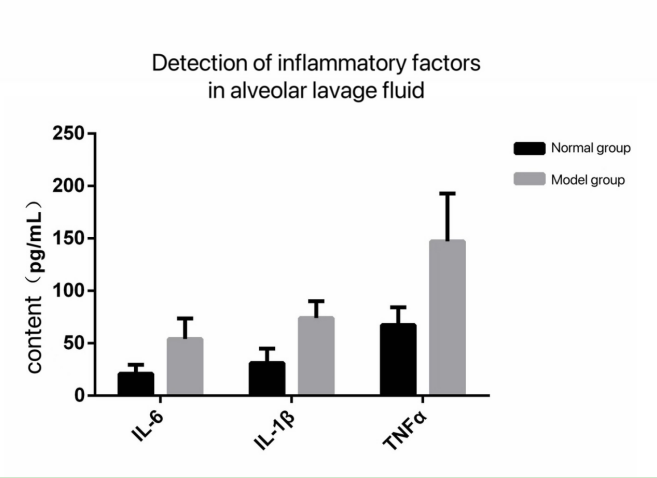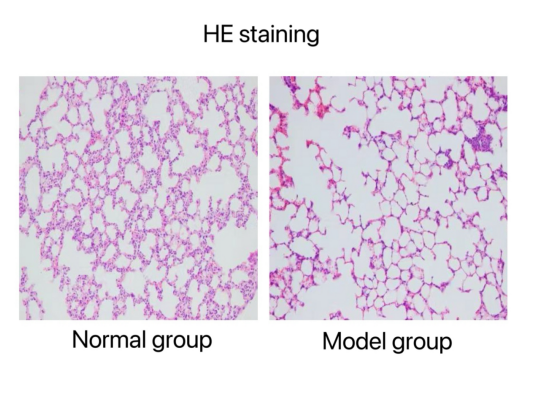

Model of chronic obstructive pulmonary disease
Chronic obstructive pulmonary disease (COPD) is a common respiratory system disease with high incidence of a disease and mortality, which may lead to progressive pulmonary dysfunction, respiratory failure and cor pulmonale.
In order to study the pathogenesis of COPD and find effective treatment, the establishment of dynamic object model is an effective tool for scientific research.

Experimental Materials & Methods
(1)Experimental material: C57 mice (male, 6-8 weeks); Cigarettes (Manufacturer: Honghe)
2.Modeling method
①Adaptive feeding for 7 days, the mice were placed in a self-made smoking poison box by fumigation. The top of the box had a small hole of 1.5X1.5cm to keep the air inside the box connected with the outside.
②Lighting Honghe cigarettes (tar 11mg, nicotine 1.0mg, carbon monoxide 13mg), Put the mice into the box, close the box, take out the mice after 1 hour, rest for 15 minutes, light the cigarette again, continue to put the mice in the box for 1 hour, smoke once a day, smoke for 2 hours each time, smoke for 6 days every week, model 20 weeks after the material, do HE staining.
③Alveolar lavage fluid inflammatory factor detection, HE staining.


HE staining results: The structure of alveolar wall of lung tissue in normal group was continuous and relatively complete. In the model group, the bronchial wall and surrounding inflammatory cells were infiltrated, epithelial cells fell off, and showed villous hyperplasia. Pulmonary interstitial and alveolar cavity inflammatory cell infiltration, individual visual field bleeding, pulmonary interstitial proliferation; The normal structure of the alveoli was destroyed, part of the alveoli were broken and fused with each other to form a larger alveolar cavity.


